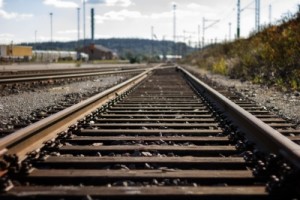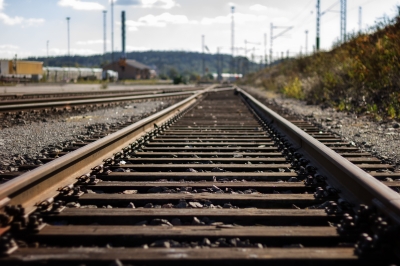 Using rail to transport goods will be good for the freight industry, even if it will not significantly alleviate road congestion, a government-owned think tank said.
Using rail to transport goods will be good for the freight industry, even if it will not significantly alleviate road congestion, a government-owned think tank said.
“With traffic congestion going to get worse in Metro Manila, shippers/locators could opt to bypass Metro Manila by using the rail system to transport their goods while at the same time truckers can still provide their services when moving the goods from the inland container terminals to the end destination of the goods or the other way around,” the Philippine Institute for Development Studies (PIDS) said in a recent discussion paper entitled “A System-wide Study of the Logistics Industry in the Greater Capital Region.”
As part of the discussion paper, the team conducted a study on the feasibility of reviving the rail connectivity of economic zones and ports as a potential component of long-term solutions to the congestion problem.
The study said it may also be “high time to consider moving or developing new export processing zones near the railway line with the primary objective of using the rail system to transport the goods coming from or going to these export processing zones.”
An efficient rail system that connects these export processing zones to the ports as well as airports should be a major component of the plan, it added.
The PIDS team also noted that to bypass the congested roads of Metro Manila, inland container terminals could be designed along the periphery, like in Calamba, Laguna and Angeles, Pampanga where rail freight services could be offered, whether the cargo was going to the ports of Manila, Batangas, or Subic as well as vice-versa.
A survey of 17 respondents also showed that nine were willing to use rail if it was available today, while seven were not sure and one said no. Those unsure would first like to know the cost of freight by train as well as the security and safety features when shipping goods by train, the study said.
Since most of the respondents who were interviewed and responded to the online questionnaire were located in Laguna, eight would like the inland terminal to be served by trains located in Laguna.
The survey also showed that the top four most important considerations when using the train are safety, efficient cargo acceptance/release at the inland terminal, availability of storage/container yard at the train terminal, and reliability of the train schedule.
PIDS also suggested a timeline for implementing the use of freight rail, with 2014 as base year, 2014-2020 as medium term, and 2020 to 2030 as long term. For the short term, PIDS said the existing rail going to the Laguna inland container depot (ICD) should be revived and operations could be done “at night in order not to compete with the PNR (Philippine National Railway) passenger service.”
Port operator International Container Terminal Services, Inc. (ICTSI) in 1997 operated a freight rail leading to its ICD in Calamba, Laguna, but stopped in 2003 due to losses and competition from trucks.
ICTSI in February signed a joint venture to revive and operate its ICD in Calamba and plans to connect it to its Manila International Container Terminal through rail.
For the medium term, the think tank suggested the rehabilitation and gradual improvement of the PNR freight line, to be operated hand in hand with the passenger transport line since the rolling stock used for freight operation is different from that of the passenger train. In order to do this, PIDS said the communication and signalling system of the PNR system should be upgraded. Freight operation by rail could then be done 24 hours a day.
It was also suggested that several studies on freight rail be integrated so that “infrastructural needs of the freight transport could also be identified and proposed and not only focus as always to the needs of the passenger travel.” It noted that “as highlighted by the truck ban in the City of Manila to solve traffic congestion along its streets, studies on freight and passenger movement should not be treated in isolation but should be integrated as they compete for the use of the limited road space.”
Another medium-term plan suggested was the construction of inland container depots by shipping lines handling high volume of containers “in order not to congest the ports especially of empty containers.”
“This can easily be put up given the minimal infrastructural needs of the facility,” PIDS noted.
For the long term, there is a proposal for a north and south container depot or hub, as well as for hubs adjacent to or integrated with the inland container depot of the PNR.
“Given the ever decreasing road space for trucks in Metro Manila, the need to use the services of PNR to move goods from outside Metro Manila to the Port of Manila and vice-versa would become relevant,” the study said.
The depot or hub could also be used for devanning goods, which will then be loaded onto smaller vans to circumvent the truck ban implemented within Metro Manila, PIDS said.
Moreover, an upgrade of the PNR system through public-private partnership (PPP) was identified as an important part of the long-term scheme, as the government through its PPP Center has long recognized that a PPP arrangement was the best way to speed up its rehabilitation. – Roumina Pablo
Image courtesy of papaija2008 at FreeDigitalPhotos.net





